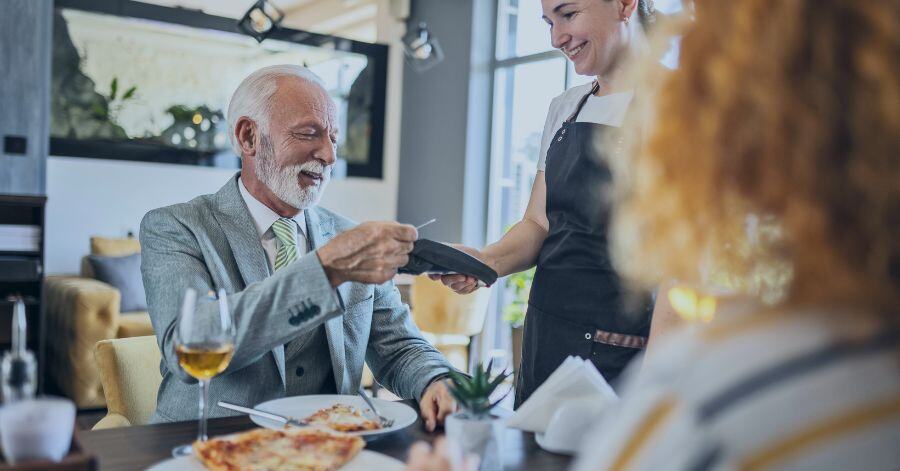Running a restaurant is a labour of love, but let’s face it, at the end of the day, your bottom line matters. To keep your business profitable, it’s crucial to understand one key metric: Cost of Goods Sold.
Whether you’re a seasoned restaurateur or new to the game, mastering Cost of Goods Sold (COGS) can significantly impact the profitability of your business.
With that in mind, let’s dive into what COGS is, why it’s important, and how you can calculate and manage it effectively.
What is Cost of Goods Sold for Restaurants, and How to Calculate it
Cost of Goods Sold, or COGS, refers to the total cost of the ingredients and products used to create the food and beverages you sell to your customers. In simple terms, it's what you spend to make your menu items.
COGS includes things like meat, vegetables, dairy, spices, and even garnishes - essentially everything that ends up on a customer's plate or in their glass.
To calculate your restaurant’s COGS for a specific period (let’s say a month), use the following formula:
COGS = Beginning Inventory + Purchases − Ending Inventory
Let’s break that down:
- Beginning Inventory: The value of what you have in stock at the start of the period.
- Purchases: The total cost of any additional inventory bought during the period.
- Ending Inventory: The value of what’s left in stock at the end of the period.
This calculation gives you a clear picture of how much you’re spending on the food and beverages that you’ve actually sold.
The Importance of Understanding COGS
Why should you care about COGS? Simply put, it’s one of the biggest factors affecting your restaurant’s profitability. If your COGS is too high, your profit margins will be squeezed, making it harder to cover other operating expenses like labour, rent, and utilities.
Understanding and managing your COGS helps you set appropriate menu prices, manage your inventory more efficiently, and identify areas where you can cut costs without compromising on quality.
If the food costs in your restaurant are out of control, check out our guide, 5 Commonly Overlooked Areas That Crumble Your Food Cost. This will give you an idea of where you may be losing money and how inventory control can change that.
What Should Your Restaurant’s COGS be?
There isn’t a one-size-fits-all answer to this question, as COGS can vary depending on the type of restaurant you operate, your location, and your specific menu items. However, as a general rule of thumb, most restaurants aim to keep their COGS between 28% and 35% of their total sales.
If your COGS is higher than this, it might be time to take a closer look at your operations. Are you over-purchasing ingredients that spoil before they can be used? Are portion sizes too large? Identifying these issues can help you get your Cost of Goods Sold in line with industry standards.
5 Key Ways to Reduce Cost of Goods Sold
Now that you know what COGS is and why it’s important, let’s talk about how you can keep it in check. Here are five practical strategies to help you reduce your Cost of Goods Sold and boost your profitability.
1 - Avoid Waste
Waste is one of the biggest culprits behind high COGS. From ingredients that spoil before they’re used to food that gets thrown away during prep, waste can quickly eat into your profits. To avoid waste, focus on proper storage techniques, track expiration dates, and consider repurposing ingredients in creative ways. For example, if you have vegetables that are close to expiring, use them in soups or specials before they go bad.
For information on how to reduce waste, read our blog, Smart Steps to Cut Down on Restaurant Food Waste.
2 - Optimize Your Inventory
Effective inventory management is key to keeping your COGS in check. Regularly take inventory and compare it against sales to identify discrepancies. Use inventory management software to gain better visibility and control over what you have in stock. This will help you avoid over-purchasing and ensure that you always have the right amount of ingredients on hand.
3 - Make Changes to Your Menu
Your menu should be a reflection of what’s profitable, popular, and practical. Regularly review your menu items and assess their profitability. If certain dishes have a high COGS but aren’t selling well, consider removing them from the menu or adjusting the recipe to make them more cost-effective. You can also experiment with seasonal menus that take advantage of ingredients when they’re in peak season and more affordable.
For more information on creating the perfect menu, read our blog - How to Build a Restaurant Menu: Your Complete 6-Step Guide.
4 - Standardize Your Portion Sizes
Inconsistent portion sizes can lead to fluctuating COGS and impact your profits. By standardizing portion sizes, you can better predict your ingredient needs and ensure that each dish costs the same to produce every time it’s ordered. To do this successfully it’s important to train your kitchen staff to adhere to these standards, and consider using portion control tools like measuring cups and scales.
5 - Use Forecasting to Optimize Your Purchasing
Accurate forecasting can help you predict future sales and adjust your purchasing accordingly. Analyze your sales data to identify trends and patterns, such as which days of the week are busier or which menu items are most popular. This will enable you to order the right amount of ingredients and reduce the risk of overstocking or understocking.
Understanding and managing your Cost of Goods Sold is crucial for running a profitable restaurant. By calculating COGS accurately and implementing strategies to reduce it, you can keep your expenses in check and improve your bottom line.
Not sure where to start? Sculpture Hospitality has the technologies and expertise you need to gain control over your inventory and drive up profit margins. Get in touch with our team today to learn more.










